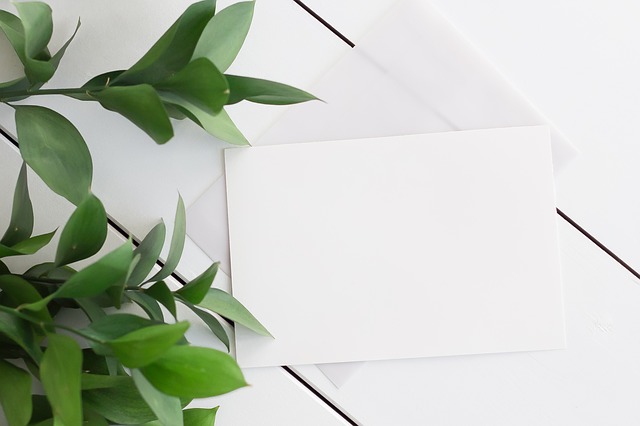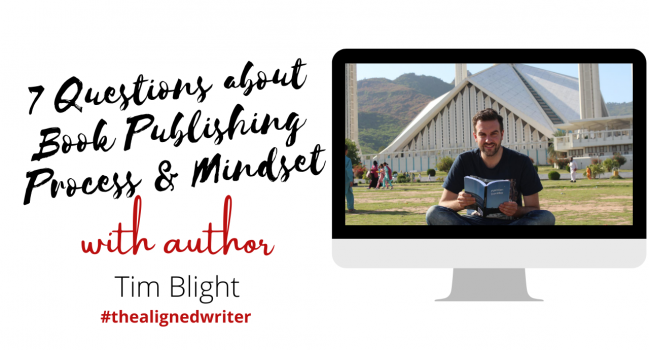Author Interview with Tim Blight: 7 Questions about Book Publishing Process & Mindset
Any money spent on improvement of our books is money well spent. It’s all worth it, and more!, says Tim

In this exclusive author interview series, “7 questions to ask an aligned author“, Tim Blight–author of the travel guide Pakistan Traveller will illuminate us with his book publishing process and mindset strategies pertaining to editing, layout and design, self-publishing options and more. Read his preceding interview on the book writing process in case you missed it out.
Tim–an English teacher, avid global traveler and non-fiction author from Australia–has authored two books so far that have garnered immense praise and appreciation from his fans and others alike.
His self-published works include Pakistan Traveller, the world’s most comprehensive travel guidebook to Pakistan, currently in its second edition and a recipe book Recipes for Ramadan: by UrbanDuniya featuring dishes from his travel around Asia and the Middle East. Both of his books have been published through Amazon and also available on GumRoad.
Here are his seven best tips for book publishing process and mindset you must not miss out on.
7 Author Interview Questions about Book Publishing Process & Mindset Answered
#1 What’s the best money you have spent so far on book publishing?
Any money spent on improvement of our books is money well spent. I personally can’t decide whether it’s the train and bus tickets to media interviews to promote my book, or whether it’s the time and money spent with my designer to give my work a visual makeover. It’s all worth it, and more!
#2 How important is to invest in professional editing and why?
If you don’t invest in a professional editor you need to make sure that you still properly edit your work in other ways. It’s so important not just to make sure the content is appropriate, but also to check for any errors or even layout mistakes. I will admit to not investing in professional editing on the first edition of one of my books, and I paid the price in embarrassment every time someone pointed out an issue with the book they had paid money for. Never again.
If you think you can do it yourself, I’d say at least wait 6 months or a year between finishing writing and editing – and don’t look at the book during that time. It is torturous, but it’s the only way to ensure you have enough ‘distance’ from the material to see any glaring errors.
#3 I heard a published author once say that it was pretty normal to have proof-reading errors in the first print edition. What’s your opinion on this and what would you recommend aspiring authors in this regard?
Yes, but following on from the previous question, these can be largely avoided by getting a good editor. Not entirely avoided, but largely. There will always be one small punctuation error here or there. That’s not a major issue, and I believe quite normal (although obviously ideally avoided).
When text starts to not make sense, or it’s obviously erroneous or even difficult to understand… that’s the kind of thing you ought to invest in an editor for, so your first outing as a published writer doesn’t have you second-guessing your own abilities.
#4 What are the considerations you kept in mind when considering the size of your book and why? Any helpful tips you would like to share from experience regarding book sizing?
For both of my books, size was a big part of the product.
The travel guide, Pakistan Traveller needed to be comprehensive but lightweight and compact enough to be easy to carry when travelling. The recipe book, Recipes for Ramadan: by UrbanDuniya needed to be large enough to act as a potential coffee table book or a talking piece, but also convenient enough to be used in the kitchen. Having said that, I also had to consider the fact that more pages meant a higher price.
I don’t know if I have any tips other than that it’s always a balance that you have to get just right— function vs appearance vs cost vs content. Be prepared to compromise!
#5 How much does the layout and design such as fonts, text size and spacing etc. matter and on what basis shall one choose these elements? Describe your own layout and design process with your books?
A lot!
I designed everything in my first two editions of my Pakistan Traveller book, and I know it wasn’t the best, but I did it at the time to get things done. A year later I met a graphic designer who is a huge fan of my Pakistan Traveller books who said that she loves the content but “the layout, quite frankly, is terrible”. It would have hurt if I didn’t partly agree with her. She then offered to collaborate on the design work for the third edition, which we are working on now and I’m glad to say the first drafts look spectacular! I can’t wait to show them to the world—my content, my words, but presented the way they deserve to be presented. I’m so excited!
#6 What is the most unethical practice in the publishing industry?
Publishing houses stealing manuscripts from prospective authors. Thankfully, it’s not common but it happens and it’s not just unethical, it’s heartbreaking. I can’t even begin to imagine what that would feel like… having my book copied or plagiarised is an unfortunate, illegal, but to some degree inevitable risk, and as writers we always assume that bit of risk when we put our work into the public domain. But having someone simply walk away with a manuscript ready to be published is my worst nightmare, but thankfully it’s something that hasn’t happened to me.
#7 Which platforms are your books available for purchase? Are there any relevant costs, limitations or requirements to upload these platforms?
My books are currently available through Amazon as paperback and kindle books, and Gumroad as an eBook. Both platforms offer great options for self-publishers to get started, and have really allowed me to gain a foothold in the industry, although I’m starting to wonder if it’s time to move on.
The benefit is that you can choose to print on demand, so books will only be printed if someone orders, meaning there is no upfront payment. The potential market for your book is huge, too. The drawback is that you have to do ALL of the marketing yourself, and it’s so easy for your book to get lost out there among everything else online. Print-on-demand pushes the cost of the book up, too.
Answer #1 is my personal favorite. What’s yours? Have more questions regarding self-publishing? Comment below to get them answered. #thealignedwriter
Follow Tim
Website https://www.urbanduniya.com
Amazon Amazon Author Profile
YouTube https://youtube.com/urbanduniya
Instagram https://instagram.com/urbanduniya
Facebook https://facebook.com/urbanduniya
Twitter https://twitter.com/urbanduniya

